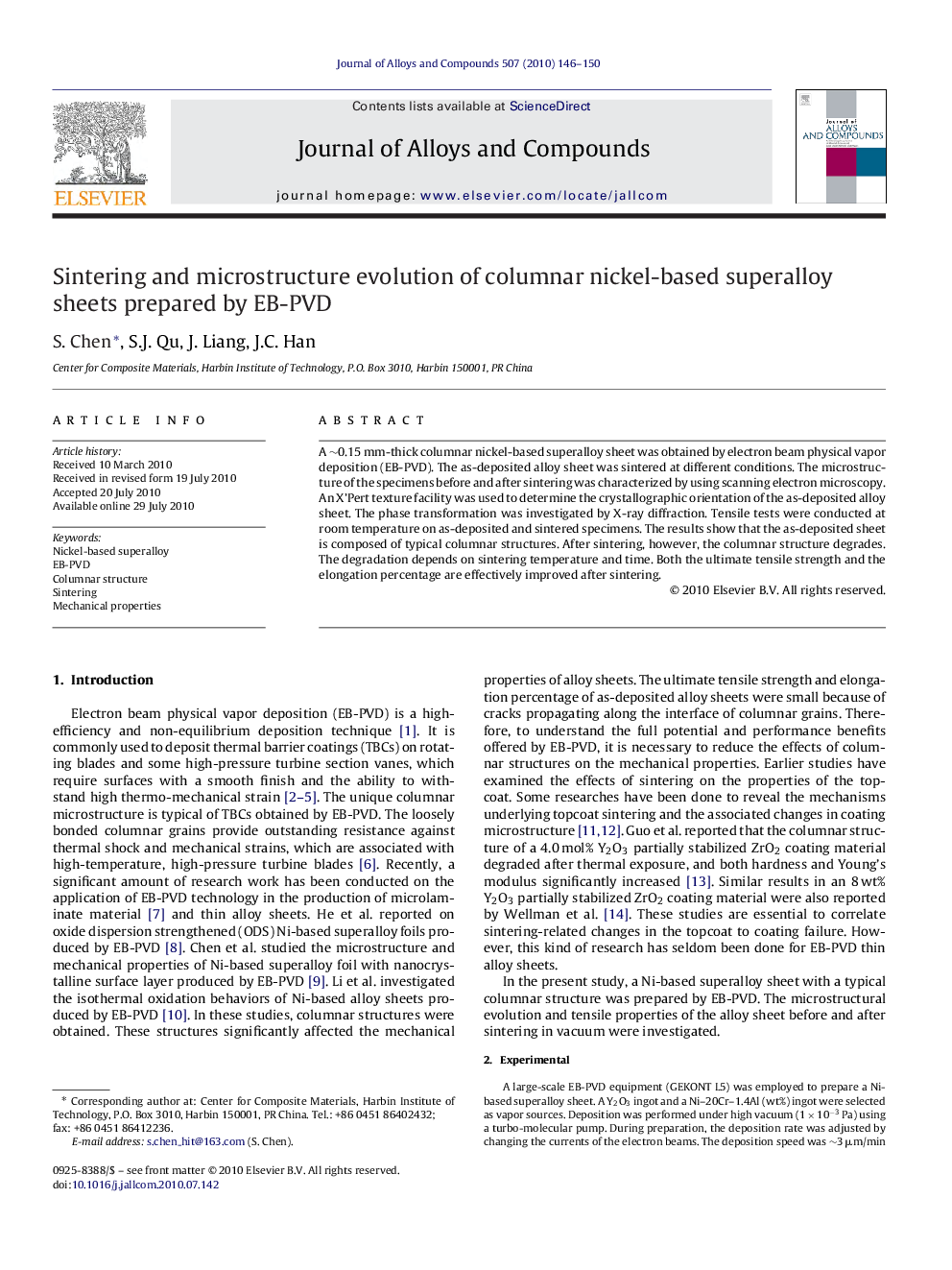| Article ID | Journal | Published Year | Pages | File Type |
|---|---|---|---|---|
| 1618228 | Journal of Alloys and Compounds | 2010 | 5 Pages |
A ∼0.15 mm-thick columnar nickel-based superalloy sheet was obtained by electron beam physical vapor deposition (EB-PVD). The as-deposited alloy sheet was sintered at different conditions. The microstructure of the specimens before and after sintering was characterized by using scanning electron microscopy. An X’Pert texture facility was used to determine the crystallographic orientation of the as-deposited alloy sheet. The phase transformation was investigated by X-ray diffraction. Tensile tests were conducted at room temperature on as-deposited and sintered specimens. The results show that the as-deposited sheet is composed of typical columnar structures. After sintering, however, the columnar structure degrades. The degradation depends on sintering temperature and time. Both the ultimate tensile strength and the elongation percentage are effectively improved after sintering.
Research highlights▶ EB-PVD technology is commonly used to deposit thermal barrier coatings (TBCs) and columnar structure is commonly seen in EB-PVD condensates. The unique columnar structure can provide outstanding resistance against thermal shock and mechanical strains for TBCs. However, a number of researchers have found that the columnar structure can affect the mechanical properties of EB-PVD alloy thin sheet significantly. As yet, works on how to reduce this kind of effects are seldom done. In the present article, we tried to reveal the sintering effects on microstructure evolution and mechanical properties of columnar Ni-based superalloy sheet. The results suggests that after sintering, the columnar structure degrades. Degradation depends on sintering temperature and time. Both the ultimate tensile strength and the elongation percentage are effectively improved after sintering.
